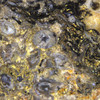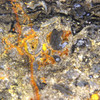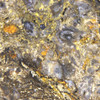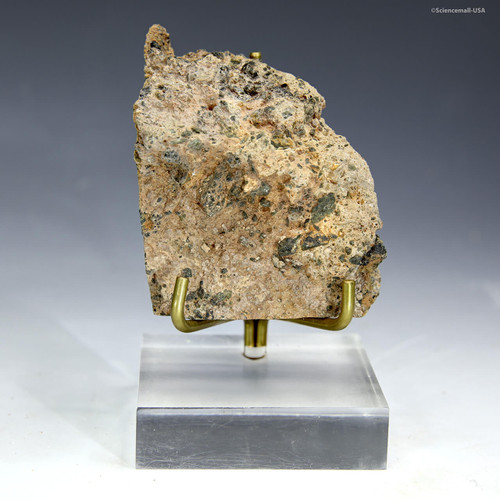Rhynie Chert Fossil — Rare Devonian Hydrothermal Ecosystem
Brand : Sciencemall-USA
- SKU:
- JPT-107995
- Condition:
- New
- Availability:
- Usually ships in 24 hours.
- Weight:
- 1.00 LBS
- Minimum Purchase:
- 1 unit
- Maximum Purchase:
- 1 unit
- Shipping:
- Calculated at Checkout
What is the Rhynie Chert Hydrothermal Deposit from Scotland?
The Rhynie Chert is a Devonian hot-spring silica deposit (~407 million years old) from near the village of Rhynie in Aberdeenshire, Scotland. Within its fine-grained quartz (microcrystalline chert), it preserves an entire ancient wetland ecosystem in exquisite three-dimensional detail — down to individual plant cells, fungal hyphae, spores, algae, and arthropods.
Unlike most fossils, which preserve outlines or compressions, the Rhynie Chert encased living organisms in silica almost instantly, like a natural laboratory slide. It is the earliest known terrestrial ecosystem preserved in situ — plants rooted where they grew, soil crusts intact, and microorganisms fossilized at the microscopic level.
How Did Rhynie Chert Form?
During the Early Devonian, volcanic activity near Rhynie generated geothermal hot springs — similar to modern Yellowstone geyser basins. Silica-rich waters periodically flooded low-lying marshes, coating everything — plants, microbial mats, arthropods — in thin films of amorphous silica (opal-A).
Over time:
- Silica precipitated from cooling spring waters, entombing organic material almost instantly.
- Early diagenesis transformed the opal into microcrystalline quartz (chert).
- Hydrothermal cycling and slow replacement preserved microscopic detail — including nuclei and cell walls — creating one of the most remarkable fossil records on Earth.
This process is why Rhynie chert specimens, like this one, display micro-laminated sinter layers and filamentous chert textures — direct evidence of those ancient hydrothermal pulses.
What Can You Find in This Rhynie Chert?
1. Chert Filament Bands (Silicified Microbial Textures)
Location:
Look across the upper half of the specimen, slightly right of center — you’ll notice wavy, light gray to bluish-gray streaks that appear to run subparallel to the bedding plane. These are the chert filament bands, representing silicified mats of microbial filaments (mostly cyanobacteria and fungal hyphae–like structures in the Rhynie ecosystem).
Identification cues:
- Fine, translucent silica bands with slightly vitreous sheen — this is opaline silica that replaced organic filaments.
- Curvilinear and tangled textures, not smooth — evidence of pre-fossilization microbial mat shrinkage.
- Local concentration of small blebs or spherules (now chalcedonic quartz) — silicification fronts that followed organic carbon films.
These filamentous zones are part of what made the Rhynie Chert so famous — they record Earth’s earliest terrestrial ecosystem, with fossilized fungi (e.g., Rhynia, Asteroxylon) and cyanobacterial sheaths entombed in hot-spring silica.
2. Micro-Laminae (Rhythmic Silica Deposition Layers)
Location:
The lower third of the specimen, particularly along the left-to-center region, shows alternating dark and light bands roughly 1–3 mm thick.
Identification cues:
- Rhythmic alternation between carbon-rich (dark) and silica-rich (light) laminae.
- Very fine, even spacing — a hallmark of hot-spring sinter or episodic silica deposition from hydrothermal fluids.
- Crosscutting subtle fractures suggest brittle deformation after silicification, confirming early diagenetic chert.
These laminae represent episodic hydrothermal pulses, where silica-saturated waters periodically flooded the biotic marshy surface, encrusting plants, algae, and microbes before they decayed — freezing them in time.
3. Secondary Indicators of Biogenic Texture
Scattered circular to elliptical spots — yellowish or pale tan — across the middle section correspond to:
- Plant tissue voids, later filled with chalcedony or iron oxides.
- Localized microbial blooms, which nucleated silica precipitation around organic substrates.
These reinforce the chert biogenic origin, distinguishing this from purely chemical chert.
What is the Scientific Significance of Rhynie Chert?
Earliest Terrestrial Flora
The chert contains Rhynia, Asteroxylon, Aglaophyton, and Horneophyton — some of the first vascular and pre-vascular plants. These species mark the evolutionary transition from aquatic green algae to land plants capable of conducting water and standing upright.
First Symbiotic Fungi and Soils
Fossilized mycorrhizal fungi (Glomites) and lichen-like associations demonstrate early plant–fungus cooperation. This was crucial for nutrient uptake on barren volcanic ground — the beginning of soil formation.
Earliest Terrestrial Arthropods
Microscopic arthropods (springtails, mites, early spiders) are found between laminae — the oldest land-dwelling animals ever discovered.
Exceptional Preservation of Ecosystem Context
Unlike isolated fossils, Rhynie Chert preserves entire ecological interactions — roots in soil, fungi on roots, spores in situ — all silicified together.
Original Discovery and Study of Rhynie Chert
Discovered: Around 1912, when William Mackie, a local geologist, noticed fossil plants within silicified blocks from a small quarry and stream bed near Rhynie.
Studied: The early 20th-century team of Robert Kidston and William H. Lang (1917–1921) systematically described the flora, coining the term Rhynie Chert.
Modern Reinvestigation: Later studies using thin sections, SEM, and synchrotron imaging revealed not only plant anatomy but fungal networks, bacteria, and arthropod microfossils — making the Rhynie Chert an enduring type locality for early terrestrial life.
Product Details
- Size: 80mm L × 75mm W × 16mm D
- Weight: 188 grams
- Finish: Highly polished diamond hand lapped face, with gloss coating to better see its distinctive features, all-natural back. Rough estimate of hand polishing time: 4 hours.
- Includes: Certificate of Authenticity and information about Rhynie Chert
Why Collectors Value Rhynie Chert
For collectors and science educators, the Rhynie Chert is:
- A benchmark fossil bridging geology, paleobotany, and evolutionary biology.
- A geological rarity — found only in a small area of Scotland, with no other deposit matching its fidelity or age.
- A tangible record of life's colonization of land, nearly half a billion years ago.
Owning an authentic piece of Rhynie Chert is like holding the moment when life first stepped onto land — preserved by volcanic water and time.
Specimen Highlights
This Rhynie Chert specimen exhibits fine silica lamination and chert filament bands, recording a 407-million-year-old hot-spring ecosystem frozen in quartz. Alternating light and dark micro-layers reveal rhythmic hydrothermal pulses, while translucent silica zones preserve microbial and fungal textures with remarkable fidelity. The subtle fibrous banding and organic blebs are classic indicators of early terrestrial life silicified in place. With excellent color contrast, minimal alteration, and confirmed provenance from the Rhynie beds of Scotland, this is a visually and scientifically outstanding example of Earth’s first land ecosystem preserved in stone.
Note: Highly polished front, all-natural back. This is a museum-grade specimen!











